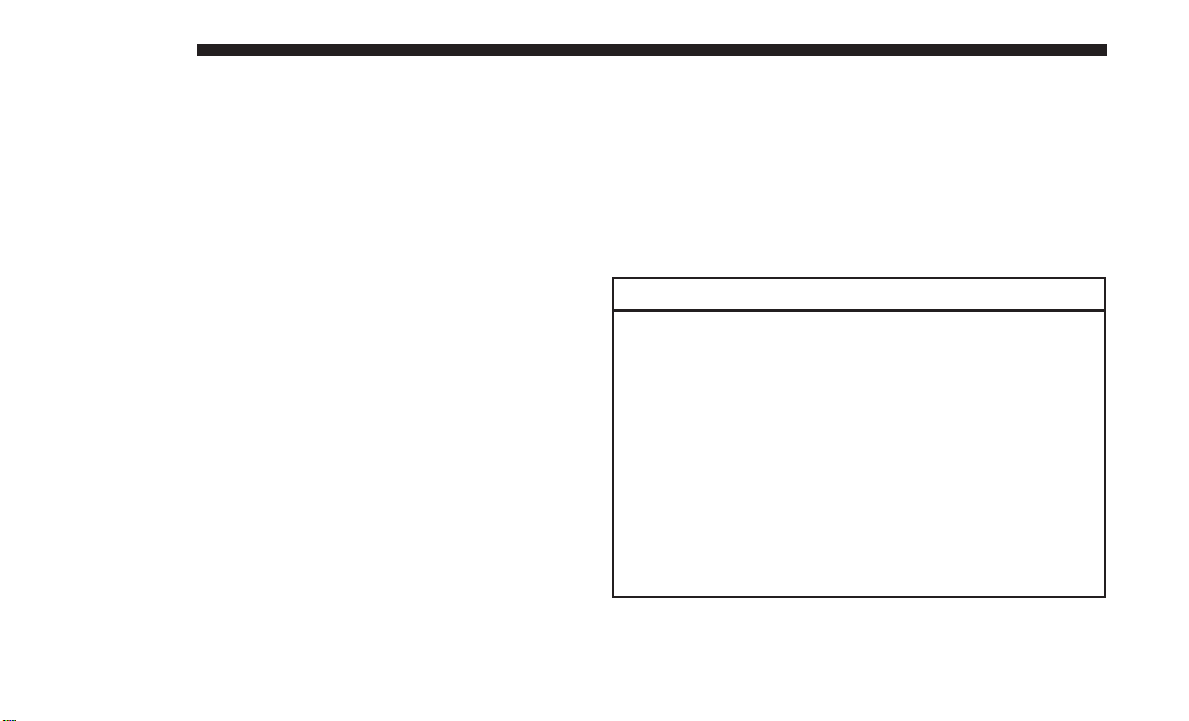Loading ...
Loading ...
Loading ...

The TPMS will continue to warn the driver of low tire
pressure as long as the condition exists, and will not turn
off until the tire pressure is at or above the recommended
cold placard pressure. Once the low tire pressure warning
(Tire Pressure Monitoring System Warning Light) illumi-
nates, you must increase the tire pressure to the recom-
mended cold placard pressure in order for the Tire Pressure
Monitoring System Warning Light to turn off.
NOTE: When filling warm tires, the tire pressure may need
to be increased up to an additional 4 psi (28 kPa) above the
recommended cold placard pressure in order to turn the
Tire Pressure Monitoring System Warning Light off.
The system will automatically update and the Tire Pressure
Monitoring System Warning Light will turn off once the
system receives the updated tire pressures. The vehicle
may need to be driven for up to 20 minutes above 15 mph
(24 km/h) in order for the TPMS to receive this informa-
tion.
For example, your vehicle may have a recommended cold
(parked for more than three hours) placard pressure of
33 psi (227 kPa). If the ambient temperature is 68°F (20°C)
and the measured tire pressure is 28 psi (193 kPa), a
temperature drop to 20°F (-7°C) will decrease the tire
pressure to approximately 24 psi (165 kPa). This tire
pressure is low enough to turn ON the Tire Pressure
Monitoring System Warning Light. Driving the vehicle
may cause the tire pressure to rise to approximately 28 psi
(193 kPa), but the Tire Pressure Monitoring System Warn-
ing Light will still be on. In this situation, the Tire Pressure
Monitoring System Warning Light will turn off only after
the tires are inflated to the vehicle’s recommended cold
placard pressure value.
CAUTION!
• The TPMS has been optimized for the original
equipment tires and wheels. TPMS pressures and
warnings have been established for the tire size
equipped on your vehicle. Undesirable system op-
eration or sensor damage may result when using
replacement equipment that is not of the same size,
type, and/or style. The TPM sensor is not designed
for use on aftermarket wheels and may contribute to
a poor overall system performance or sensor damage.
Customers are encouraged to use OEM wheels to
assure proper TPM feature operation.
(Continued)
164 SAFETY
Loading ...
Loading ...
Loading ...